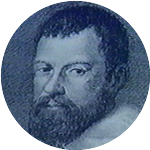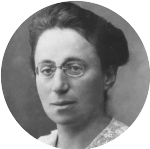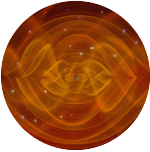Newsletter for May, 2021
Welcome to the fifth of our monthly newsletters. We will be bringing this to your mailbox around the middle of each month, to keep you informed about Planetarium and Friends news, as well as happenings in the world of astronomy and events in our area related to science education. Visit the website for more news updates and a list of our articles.
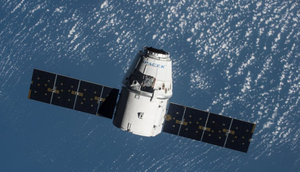
SpaceX delivers new crew to International Space Station
On April 24th, a SpaceX Dragon spacecraft delivered four astronauts to the International Space Station for a six-month stay. The astronauts are from NASA, the ESA, and JAXA (Japan). They replaced three NASA and one JAXA astronaut, who returned to Earth the following Wednesday in another SpaceX craft.
On April 24th, a SpaceX Dragon spacecraft delivered four astronauts to the International Space Station for a six-month stay. The astronauts are from NASA, the ESA, and JAXA (Japan). They replaced three NASA and one JAXA astronaut, who returned to Earth the following Wednesday in another SpaceX craft.
The Oldest Film of a Solar Eclipse Has Been Restored and Released Online
The Royal Astronomical Society has rediscovered eclipse footage from 1900 and placed it online for the world to admire. The movie was made by a magician, Nevil Maskelyne, who operated the “Egyptian Hall”, London’s oldest magic theater, with a partner. Maskelyne and his father were early technical innovators in the area of film. He developed a slow motion filming technique, and the War Office asked him to help analyze the flight of artillery shells. He loved astronomy, became a fellow of the Royal Astronomical Society, and advocated for the use of new technology, including film, in research.
The Royal Astronomical Society has rediscovered eclipse footage from 1900 and placed it online for the world to admire. The movie was made by a magician, Nevil Maskelyne, who operated the “Egyptian Hall”, London’s oldest magic theater, with a partner. Maskelyne and his father were early technical innovators in the area of film. He developed a slow motion filming technique, and the War Office asked him to help analyze the flight of artillery shells. He loved astronomy, became a fellow of the Royal Astronomical Society, and advocated for the use of new technology, including film, in research.

Apollo 11 astronaut Michael Collins dies at 90
Collins was one of the three astronauts who visited the Moon as part of the Apollo 11 mission in 1969. As the two other fellows cavorted on the lunar surface, Collins had to remain in orbit in the Command Module. After his NASA career, Collins pursued politics for a while, and then took up painting and writing.
Collins was one of the three astronauts who visited the Moon as part of the Apollo 11 mission in 1969. As the two other fellows cavorted on the lunar surface, Collins had to remain in orbit in the Command Module. After his NASA career, Collins pursued politics for a while, and then took up painting and writing.
Virginia State Parks Awarded International Dark Sky Park Status
As anyone living in the area knows, light pollution is very bad in the Washington, DC region. Your best bet to see the stars in Arlington is actually in the planetarium – once it reopens! However, if you are willing to drive as far as Fauquier County, you can see a lot more of the night sky. In fact, Sky Meadows State Park has been declared an International Dark Sky Park by the International Dark-Sky Association. NOVAC, the Northern Virginia Astronomy Club, partners with the park to provide public observing nights approximately once a month. Check the park’s website for details.
Contributed by Kathi Overton.
As anyone living in the area knows, light pollution is very bad in the Washington, DC region. Your best bet to see the stars in Arlington is actually in the planetarium – once it reopens! However, if you are willing to drive as far as Fauquier County, you can see a lot more of the night sky. In fact, Sky Meadows State Park has been declared an International Dark Sky Park by the International Dark-Sky Association. NOVAC, the Northern Virginia Astronomy Club, partners with the park to provide public observing nights approximately once a month. Check the park’s website for details.
Contributed by Kathi Overton.
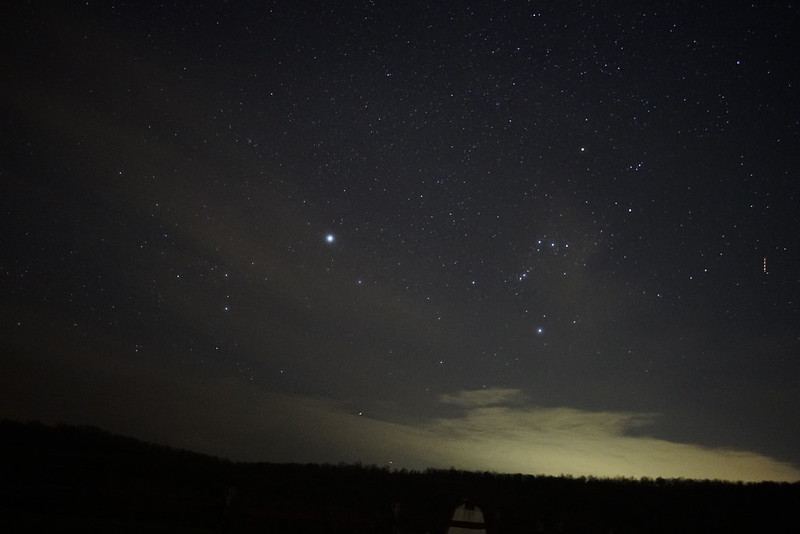
What’s Happening to the Planetarium?!
The David M. Brown Planetarium is temporarily closed right now because of the Education Center Reuse Project, which is completely renovating the Ed Center building next to the planetarium. The former Arlington Schools administrative building is being transformed into an annex for Washington-Liberty high school, with instructional space for 500–600 students. The Planetarium is also getting some much needed upgrades to its utilities. The renovation project is scheduled for completion in 2022, and the Planetarium should reopen in time for the 2022 fall semester. For updates on the renovation project, visit https://www.apsva.us/education-center-reuse
Contributed by Kathi Overton.
The David M. Brown Planetarium is temporarily closed right now because of the Education Center Reuse Project, which is completely renovating the Ed Center building next to the planetarium. The former Arlington Schools administrative building is being transformed into an annex for Washington-Liberty high school, with instructional space for 500–600 students. The Planetarium is also getting some much needed upgrades to its utilities. The renovation project is scheduled for completion in 2022, and the Planetarium should reopen in time for the 2022 fall semester. For updates on the renovation project, visit https://www.apsva.us/education-center-reuse
Contributed by Kathi Overton.


A 15-year radar reflection measure-
ment program has revealed that the
length of the Venusian day is
243.0226 Earth days, and can
vary by as much as 20 minutes,
due to its massive atmosphere.
Its axis of rotation is tilted by
only 2.6392 degrees, causing
lack of seasons. Radar pulses
were emitted from the Goldstone
antenna in the Mojave Desert and
received at Goldstone and at the
Green Bank Observatory
in West Virginia.
ment program has revealed that the
length of the Venusian day is
243.0226 Earth days, and can
vary by as much as 20 minutes,
due to its massive atmosphere.
Its axis of rotation is tilted by
only 2.6392 degrees, causing
lack of seasons. Radar pulses
were emitted from the Goldstone
antenna in the Mojave Desert and
received at Goldstone and at the
Green Bank Observatory
in West Virginia.
Torsional Alfvén waves detected in the Sun’s photosphere
The mechanism behind the heating of the Sun’s atmosphere is a longstanding mystery. Now, measurements taken with the Interferometric Bidimensional Spectropolarimeter at the National Solar Observatory in New Mexico may reveal a missing piece of the puzzle of how the Sun works. Alfvén waves, which can be thought of as waves travelling along magnetic field lines in a plasma, can carry energy into the solar atmosphere, and accelerate the solar wind. These waves had been predicted 50 years ago, but not observed in the photosphere until now.
The mechanism behind the heating of the Sun’s atmosphere is a longstanding mystery. Now, measurements taken with the Interferometric Bidimensional Spectropolarimeter at the National Solar Observatory in New Mexico may reveal a missing piece of the puzzle of how the Sun works. Alfvén waves, which can be thought of as waves travelling along magnetic field lines in a plasma, can carry energy into the solar atmosphere, and accelerate the solar wind. These waves had been predicted 50 years ago, but not observed in the photosphere until now.

Voyager 1 hears the hush of interstellar plasma
Launched in 1977, Voyager 1, one of NASA’s most astounding success stories, is still sending us interesting information. A decade ago it became the first artificial object to cross the boundary into interstellar space. Over the last few years, analysis of the data from Voyager shows a subtle but persistent signal corresponding to a plasma oscillation not triggered by solar activity. This should allow mapping of the interstellar medium as Voyager continues its lonely journey into the vast region beyond our star.
Launched in 1977, Voyager 1, one of NASA’s most astounding success stories, is still sending us interesting information. A decade ago it became the first artificial object to cross the boundary into interstellar space. Over the last few years, analysis of the data from Voyager shows a subtle but persistent signal corresponding to a plasma oscillation not triggered by solar activity. This should allow mapping of the interstellar medium as Voyager continues its lonely journey into the vast region beyond our star.
A helicopter on Mars
NASA’s Ingenuity helicopter has met the difficult technical challenge of rotational flight in the thin atmosphere of Mars. The several test flights were so successful that the helicopter has begun contributing to the science mission, scouting for locations to which to send the rover. The rover, named Perseverance, has its own exciting news, having recently extracted oxygen from the Mars atmosphere.
NASA’s Ingenuity helicopter has met the difficult technical challenge of rotational flight in the thin atmosphere of Mars. The several test flights were so successful that the helicopter has begun contributing to the science mission, scouting for locations to which to send the rover. The rover, named Perseverance, has its own exciting news, having recently extracted oxygen from the Mars atmosphere.
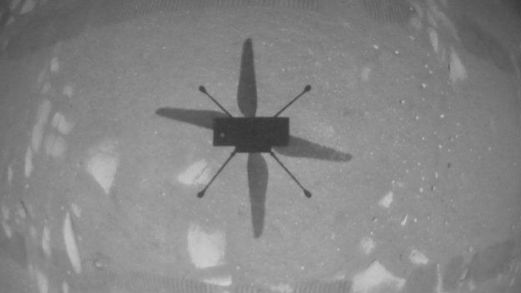
China lands rover on Mars
On May 14th, China became the second country to land a working vehicle on Mars. The Chinese Zhurong rover will explore the neighborhood known as the Utopia Planitia. Russia, the ESA, and the UK have all attempted to land missions on Mars and failed. The Zhurong packs a variety of scientific instruments and has a planned mission of 90 Martian days.
On May 14th, China became the second country to land a working vehicle on Mars. The Chinese Zhurong rover will explore the neighborhood known as the Utopia Planitia. Russia, the ESA, and the UK have all attempted to land missions on Mars and failed. The Zhurong packs a variety of scientific instruments and has a planned mission of 90 Martian days.
If you like it dark, go to the Canary Islands
Light pollution makes it a challenge to find good astronomical observing locations. If you want to set up your telescope in the darkest possible place, head to these islands near the west coast of Africa. According to a survey of 11 million locations, that’s the darkest (although some places, such as the Antarctica Highlands, were left out). However, not even the Canary Islands are dark enough to escape this.
Light pollution makes it a challenge to find good astronomical observing locations. If you want to set up your telescope in the darkest possible place, head to these islands near the west coast of Africa. According to a survey of 11 million locations, that’s the darkest (although some places, such as the Antarctica Highlands, were left out). However, not even the Canary Islands are dark enough to escape this.
Hydroxyl (OH) Seen for the First Time in an Exoplanet Atmosphere
Astronomers have detected OH in the atmosphere of an “ultra-hot Jupiter”, WASP-33b. This is a gas giant, like Jupiter, that orbits close to its star, leading to extremely high temperatures. This one is 400 light years distant. The measurements were made using the Subaru Telescope in the summit area of Maunakea in Hawaii.
Astronomers have detected OH in the atmosphere of an “ultra-hot Jupiter”, WASP-33b. This is a gas giant, like Jupiter, that orbits close to its star, leading to extremely high temperatures. This one is 400 light years distant. The measurements were made using the Subaru Telescope in the summit area of Maunakea in Hawaii.
Edited by Lee Phillips


 witter
witter Instagram
Instagram
